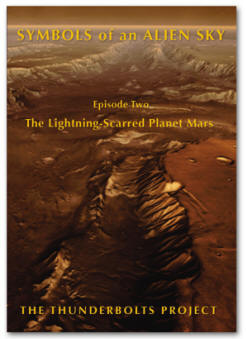|

Rainbow in Sharjah, United Arab
Emirates. Credit: GulfNews.com
Rainmaker
Jul 06, 2011
Arid regions are influencing
their weather using electrical
technology.
According to a recent
press release, the United
Arab Emirates successfully caused
rain to fall by making use of
negative ion generators.
Approximately 50 rainstorms fell in
the driest months, during which time
weather forecasters did not predict
any rain at all.
Scientists installed a network of
interconnected conductors in the
desert that release clouds of
negatively charged ions. As the
particles rise in the hot air, they
attract water vapor in the
atmosphere, since water is a dipolar
molecule with both positive and
negative poles.
It is commonly believed that
weather on Earth is driven by the
Sun's thermal influence on the
atmosphere. As we rotate beneath our
primary, gases and dust absorb solar
radiation at varying rates and in
varying degrees.
When any particular region heats
up, the air expands and loses
density, creating a relative low
pressure area. Cooler air, being
denser, will naturally flow into the
bottom of the warm, low pressure
region, causing an upwardly rotating
convection cell to form. Most
weather systems on Earth are thought
to be based on that simple kinetic
explanation: winds blow when the
cooler, denser air flows into the
warmer, buoyant air.
However, ions attract water in
the atmosphere instead of through
the commonly described process of
neutral dust motes building up
raindrops through a process of
condensation. The dust hanging in
the air becomes charged, making it
more attractive to water vapor.
Since Earth is immersed in the
stream of ions permeating space, it
holds an electric field at its
surface of 50 – 200 volts per meter.
The electricity from space carried
by ionic particles emitted by the
Sun, otherwise known as the “solar
wind,” speeds along massive
Birkeland currents through a circuit
connecting the Sun with our planet.
Water molecules are electric dipoles
and are attracted to an opposite
polar charge, such as that on
another water molecule, so they
clump together, aligned within
Earth’s “fair
weather field.”
It was in
September of 2006 that a
major premise of Electric Universe
theory was confirmed: Earth weather
is electrically connected to the
ionosphere. Since electricity always
flows in a circuit, if the
ionosphere connects to Earth's
magnetosphere then it connects to
the circuits of the Solar System, as
well.
The ionosphere is connected to
the Sun by twisting filaments of
electric current, so the lower
levels of the atmosphere must also
experience the Sun's influence
because of the additional circuit
node that connects them with the
ionosphere. Could these electric
circuits linking the atmosphere with
the Sun have anything to do with
Earth's climate in either the short
or long term?
This leads to the more general
idea that all weather may be
influenced by the electrical
connection between Earth and solar
plasma. The larger view has only
recently been considered, so
experiments designed to verify the
effect that charged particles have
on Earth's weather are now being
conducted. It appears that they are
having some success.
Electric Universe physicist
Wal Thornhill wrote:
"If conventional theory fails to
explain electrical storms it cannot
be used to discount the results of
ionization experiments. Instead,
conventional theory suffers doubts
about its basic plausibility.
Weather experts have a limited view
of the electrical nature of the
Earth and its environment. The
'enormous power input' is freely
available from the galaxy. That
galactic electrical power drives the
weather systems on all of the
planets and even the Sun. So the
ionization experiment is rather like
the control gate in a transistor,
where a small current into the
control gate influences the entire
power output of the transistor. This
method of weather control should
eventually force the critics to
think again."
Stephen Smith
Hat tip to Jason Brown
 New
DVD New
DVD
The Lightning-Scarred
Planet Mars
A video documentary that could
change everything you thought you
knew about ancient times and
symbols. In this second episode of
Symbols of an Alien Sky, David
Talbott takes the viewer on an
odyssey across the surface of Mars.
Exploring feature after feature of
the planet, he finds that only
electric arcs could produce the
observed patterns. The high
resolution images reveal massive
channels and gouges, great mounds,
and crater chains, none finding an
explanation in traditional geology,
but all matching the scars from
electric discharge experiments in
the laboratory. (Approximately 85
minutes)
Video Selections
Order Link
|





 New
DVD
New
DVD

